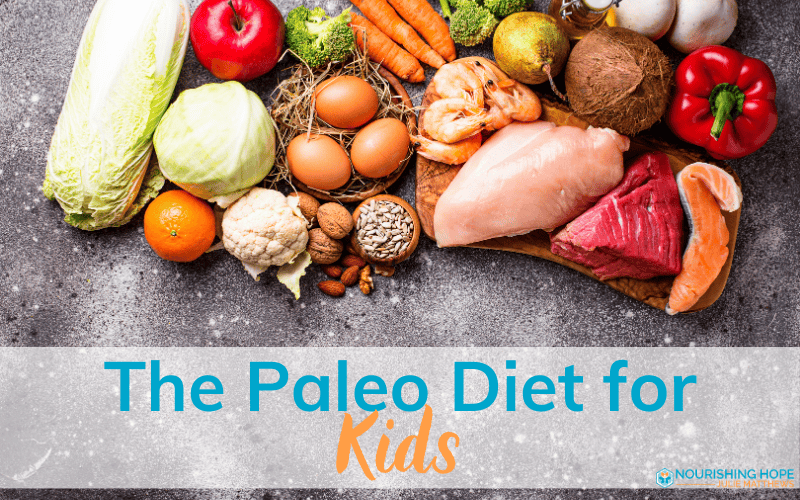
Parents today are increasingly seeking ways to support their children’s health, learning, and behavior through dietary choices. One such approach is the Paleo diet, which emphasizes whole, unprocessed foods similar to those consumed by our ancestors.
A Natural Approach to Better Health for Kids
This diet can help improve overall wellness by focusing on nutrient-dense foods and eliminating common dietary triggers that can cause digestive issues and inflammation. By prioritizing whole foods and avoiding processed items with artificial additives and preservatives, the Paleo diet helps create a healthier gut environment. The Paleo diet promotes a balanced gut microbiome [1], which is linked to better mood, behavior, and cognitive function in children [2]. By prioritizing whole foods and avoiding processed items with artificial additives and preservatives, the Paleo diet creates a healthier environment for the gut, which is crucial for overall health and development [3].
Additionally, the Paleo diet’s emphasis on low-glycemic foods supports stable blood sugar levels, beneficial for children prone to energy fluctuations and attention difficulties. Foods high in refined sugars and simple carbohydrates can cause rapid spikes and crashes in blood sugar, leading to mood swings and difficulty concentrating. By focusing on nutrient-rich vegetables, grass-fed proteins, and healthy fats, the Paleo diet provides sustained energy and supports metabolic health [4]. This dietary approach requires thoughtful planning and a willingness to explore new food options, providing a solid foundation for children’s health and well-being.
Benefits for Children with Autism, ADHD, or Neurodevelopmental Delays
Parents and healthcare professionals have observed improvements in children with autism, ADHD, or neurodevelopmental delays when following a Paleo diet. The diet’s emphasis on whole, nutrient-dense foods and the elimination of potential dietary triggers such as gluten and dairy may contribute to these benefits. Some reported improvements include:
- Reduced Inflammation: The Paleo diet’s focus on anti-inflammatory foods may help reduce inflammation in the body, which could benefit children with neurodevelopmental disorders who may have underlying inflammation.
- Balanced Blood Sugar Levels: By eliminating refined sugars and processed carbohydrates, the Paleo diet helps stabilize blood sugar levels, which may lead to improved mood, behavior, and cognitive function in children with ADHD or autism.
- Gut Health: The Paleo diet encourages the consumption of fiber-rich fruits and vegetables, which can support gut health and promote a diverse microbiome. Emerging research suggests a connection between gut health and neurological conditions, making this aspect of the diet particularly relevant for children with autism or ADHD.
- Nutrient Density: The Paleo diet prioritizes nutrient-dense foods that are rich in vitamins, minerals, and antioxidants, which are essential for brain development and overall health in children.
Let’s dive into some of the research. For children with neurodevelopmental disorders such as autism and ADHD, the Paleo diet may offer benefits by addressing specific dietary sensitivities and supporting neurological health. Many children with these conditions experience gastrointestinal issues that can exacerbate their symptoms. The Paleo diet eliminates common culprits like gluten and dairy, which are known to cause digestive distress and inflammation in some individuals. By avoiding these and other potential dietary triggers, the diet can reduce the likelihood of food-related reactions and inflammation [5], leading to improvements in behavior and cognition (as shown in a study of children with autism) [6].
Moreover, the Paleo diet’s focus on anti-inflammatory foods and nutrient density supports brain development and cognitive function. By eliminating refined sugars and ultraprocessed foods, the diet helps stabilize blood sugar levels, which may lead to improved mood, behavior, anxiety, and symptoms of ADHD and autism [7]. The inclusion of fiber-rich fruits and vegetables promotes gut health and a diverse microbiome, which emerging research suggests is linked to neurological health [8]. The diet’s emphasis on whole, nutrient-dense foods rich in vitamins, minerals, and antioxidants is essential for brain development and overall health, making it particularly relevant for children with neurodevelopmental challenges [9].
Incorporating the Paleo diet into a child’s routine requires thoughtful planning and a willingness to explore new food options. The following sections provide comprehensive food lists and kid-friendly meal ideas to help parents navigate this dietary shift and support their children’s journey to better health.
Introducing Paleo Foods for Kids
Transitioning to a Paleo diet can be a transformative step towards improving your child’s health and well-being. This dietary approach emphasizes whole, unprocessed foods that are packed with essential nutrients, supporting growth, brain development, and overall vitality. By focusing on nutrient-dense options, the Paleo diet helps eliminate common dietary triggers that can cause digestive issues and inflammation, often linked to behavioral and cognitive challenges. Below, we break down the core components of a Paleo diet and the foods to avoid, providing a clear guide for parents aiming to enhance their child’s nutrition naturally.
Paleo Foods:
- Grass-Fed Protein
- Abundant Vegetables
- Healthy Fats
- Fruits
- Nuts and Seeds
Opting for grass-fed protein sources such as meats, poultry, fish, and eggs ensures your child receives essential amino acids crucial for growth and muscle development. These proteins are rich in nutrients and free from the hormones and antibiotics often found in conventionally raised livestock. Abundant vegetables like broccoli, carrots, and kale are powerhouses of vitamins, minerals, and fiber, promoting a healthy digestive system and robust immune function. Healthy fats from avocados, coconut oil, olive oil, fish oil, and nuts support brain development and overall health, providing a steady source of energy. Fresh, seasonal fruits such as berries, apples, and oranges offer natural sweetness and a variety of vitamins and antioxidants essential for growing bodies. Nuts and seeds, including almonds, walnuts, chia seeds, and flaxseeds, contribute healthy fats, protein, and micronutrients, making them excellent snacks and meal additions.
Not Paleo:
- Grains
- Legumes
- Dairy Products
- Industrial Seed Oils
- Processed Foods
- Refined Sugar
- Artificial Additives and Sweeteners
To fully embrace the Paleo lifestyle, it’s important to eliminate certain food groups that can hinder some children’s health. Grains like wheat, oats, rice, and corn should be avoided due to their anti-nutrient content, which can cause digestive issues and inhibit nutrient absorption. Legumes, including beans, lentils, and peanuts, are also excluded as they can be hard to digest and may interfere with nutrient uptake. Dairy products, such as milk, cheese, and yogurt, are omitted due to potential lactose intolerance and inflammatory effects. Industrial seed oils like canola, soybean, and corn oil are highly processed and can contribute to inflammation, so they should be replaced with healthier fat options. Processed foods, sugary cereals, and snacks high in additives and refined sugars are not aligned with the natural foods emphasis of the Paleo diet and should be avoided. Additionally, refined sugars found in sodas, candies, and pastries offer empty calories and can lead to various health problems. Finally, stay away from artificial additives and sweeteners, which can have negative health effects and are not part of a natural, Paleo-friendly diet.
By incorporating these guidelines, you can create a nourishing and balanced diet that supports your child’s unique needs, paving the way for improved health and well-being.
Paleo Food List
Foods to Avoid on Paleo:
To help you navigate the transition to a Paleo diet for your child, we’ve compiled a comprehensive list of foods to avoid. Eliminating these items can significantly reduce dietary triggers that may cause inflammation, digestive issues, and other health challenges. By steering clear of these foods, you can ensure that your child’s diet is aligned with Paleo principles, fostering better overall health and development. This list will serve as a handy reference to guide you in making informed choices and creating a cleaner, more natural diet for your little one.
Avoid Grains:
- Wheat
- Oats
- Barley
- Rye
- Corn
- Rice
- Millet
- Sorghum
- Quinoa
- Bulgur
- Farro
- Spelt
Avoid Legumes:
- Beans (black beans, kidney beans, pinto beans, etc.)
- Lentils
- Peas
- Chickpeas
- Soybeans
- Peanuts
- Lupins
- Mung beans
- Navy beans
- Fava beans
- Adzuki beans
- Black-eyed peas
Avoid Dairy Products:
- Milk (cow, goat, sheep)
- Cheese (cheddar, mozzarella, brie, etc.)
- Yogurt
- Butter
- Cream
- Ice cream
- Cottage cheese
- Sour cream
- Kefir
- Ghee (though some Paleo dieters may allow it)
Avoid Industrial Seed Oils:
- Canola oil
- Soybean oil
- Corn oil
- Sunflower oil
- Safflower oil
- Cottonseed oil
- Grapeseed oil
- Rice bran oil
- Margarine
- Vegetable shortening
- Hydrogenated oils
Avoid Processed Foods:
- Fast food
- Packaged snacks (chips, pretzels, crackers, etc.)
- Sugary cereals
- Instant noodles
- Ready-to-eat meals
- Frozen dinners
- Canned soups (with additives)
- Processed meats (sausages, hot dogs, deli meats with additives)
- Candy bars
- Granola bars
- Protein bars with artificial ingredients
Avoid Refined Sugar:
- White sugar
- Brown sugar
- High-fructose corn syrup
- Cane sugar
- Agave nectar
- Coconut sugar
- Date sugar
- Malt syrup
- Corn syrup
- Maple syrup (though some Paleo dieters may allow it in moderation)
Avoid Artificial Additives and Sweeteners:
- Aspartame
- Sucralose
- Saccharin
- Acesulfame potassium
- Artificial flavorings
- Artificial colorings
- Preservatives (BHT, BHA, etc.)
- Monosodium glutamate (MSG)
- Sodium nitrite
- Sodium benzoate
- Xanthan gum
- Carrageenan
Foods to Include on Paleo:
Embracing a Paleo diet means focusing on nutrient-dense, whole foods that support your child’s growth, brain development, and overall well-being. Our detailed list of Paleo-friendly foods will help you incorporate a variety of healthy options into your child’s meals and snacks. From grass-fed proteins to abundant vegetables, healthy fats, fresh fruits, and nourishing nuts and seeds, these foods provide essential nutrients to promote optimal health. Use this list to inspire delicious, wholesome meals that your child will love, ensuring they receive the best nutrition possible from their diet.
Meats to Include on Paleo:
- Beef
- Pork
- Lamb
- Venison
- Bison
- Goat
- Rabbit
- Wild game
Poultry to Include on Paleo:
- Chicken
- Turkey
- Duck
- Goose
- Quail
- Pheasant
Fish and Seafood to Include on Paleo:
- Salmon
- Tuna
- Cod
- Halibut
- Mackerel
- Sardines
- Anchovies
- Trout
- Snapper
- Shrimp
- Lobster
- Crab
- Clams
- Mussels
- Oysters
- Scallops
Vegetables to Include on Paleo:
- Broccoli
- Cauliflower
- Carrots
- Bell peppers (red, yellow, green)
- Spinach
- Kale
- Swiss chard
- Lettuce (romaine, butter, leaf)
- Arugula
- Brussels sprouts
- Cabbage
- Asparagus
- Zucchini
- Squash (butternut, acorn, spaghetti)
- Pumpkin
- Beets
- Turnips
- Parsnips
- Cucumbers
- Celery
- Radishes
- Onions
- Garlic
- Tomatoes
- Eggplant
- Mushrooms
- Artichokes
- Leeks
- Fennel
Fruits to Include on Paleo:
- Apples
- Bananas
- Berries (strawberries, blueberries, raspberries, blackberries)
- Oranges
- Grapefruits
- Lemons
- Limes
- Peaches
- Plums
- Cherries
- Grapes
- Kiwis
- Mangoes
- Pineapple
- Papaya
- Melons (watermelon, cantaloupe, honeydew)
- Pomegranates
- Figs
- Dates
- Avocados
Nuts and Seeds to Include on Paleo:
- Almonds
- Walnuts
- Cashews
- Pecans
- Hazelnuts
- Brazil nuts
- Macadamia nuts
- Pistachios
- Pumpkin seeds
- Sunflower seeds
- Chia seeds
- Flaxseeds
- Hemp seeds
- Sesame seeds
Healthy Fats to Include on Paleo:
- Coconut oil
- Olive oil
- Avocado oil
- Lard (from pastured animals)
- Tallow (from grass-fed cows)
- Duck fat
- Ghee (if allowed)
Herbs and Spices to Include on Paleo:
- Basil
- Parsley
- Cilantro
- Thyme
- Rosemary
- Oregano
- Sage
- Dill
- Mint
- Chives
- Tarragon
- Bay leaves
- Ginger
- Turmeric
- Cinnamon
- Paprika
- Cumin
- Coriander
- Nutmeg
- Cloves
Beverages to Include on Paleo:
- Water
- Herbal teas
- Coconut water
- Green tea
- Bone broth
Other Food to Include on Paleo:
- Coconut milk
- Almond milk (unsweetened)
- Almond flour
- Coconut flour
- Honey (in moderation)
- Maple syrup (in moderation)
- Apple cider vinegar
- Balsamic vinegar
- Coconut aminos
Optional Foods on Paleo:
- Sweet potatoes
- Yams
- Taro
- Yuca
- Cassava flour
- Arrowroot flour
- Tapioca starch
Optional Starchy Vegetables
On the Paleo diet, sweet potatoes and other starchy vegetables like yams, taro, cassava, yuca, arrowroot flour, tapioca starch are considered optional rather than universally accepted. While some Paleo practitioners include these foods for their nutrient density and energy-boosting properties, others avoid them due to their higher carbohydrate content, which may not align with the specific dietary goals or health needs of every individual. These starchy vegetables can be beneficial for active individuals or those who tolerate carbohydrates well, but they are not allowed in all Paleo diet plans. Each family can choose to include or exclude these starchy vegetables based on their child’s personal health objectives and how their body responds to them.
Kid Friendly Paleo Meal Plan
Transitioning to a Paleo diet doesn’t mean your child has to miss out on tasty and satisfying meals. To make the switch easier and more enjoyable, I’ve curated a list of kid-friendly Paleo meal ideas for breakfast, lunch, snacks, dinner, and even dessert. These meal suggestions are designed to be both nutritious and delicious, ensuring your child receives the essential nutrients they need while enjoying a variety of flavors and textures. Whether you’re packing a school lunch or preparing a family dinner, these ideas will help you create meals that your kids will love, all while adhering to Paleo principles.
Breakfast:
Scrambled Eggs with Red Bell Peppers and Sweet Onions:
Banana Pancakes:
Smoothie Bowl:
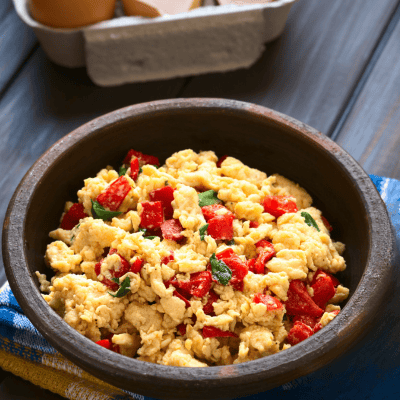
Add a side of carrot fries.
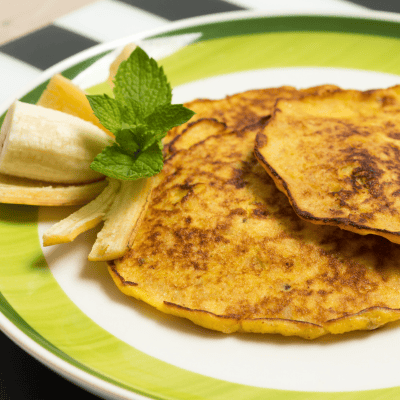
Made with mashed bananas, eggs, and a dash of cinnamon, topped with fresh berries.
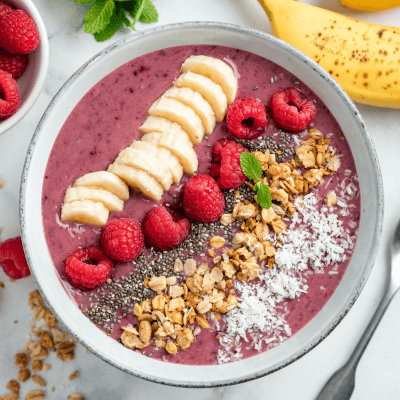
Blend banana, berries, and a bit of almond milk, then top with nuts, seeds, and a few coconut flakes.
Lunch:
Grilled Chicken Breast:
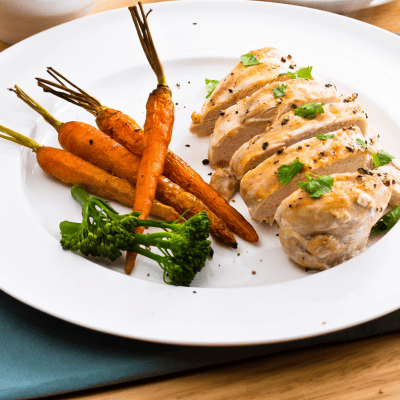
Serve with steamed broccoli and carrot sticks, with a side of homemade guacamole for dipping.
Paleo Wraps:
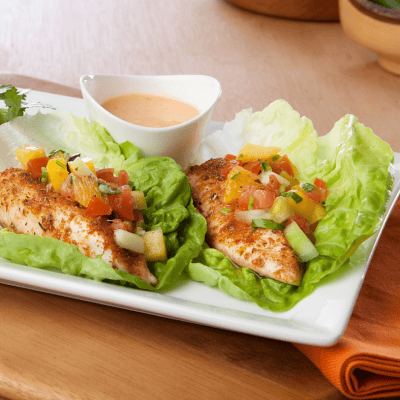
Use lettuce leaves to wrap sliced turkey, avocado, and tomato slices. Serve with a side of apple slices and almond butter for dipping.
Chicken Salad:
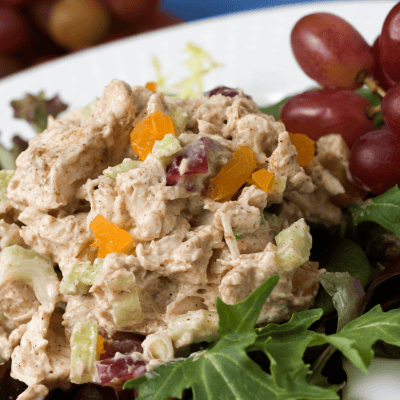
Shredded chicken mixed with paleo mayo, grapes, celery, and a pinch of salt, served on a bed of lettuce.
Snack:
Veggie Sticks:
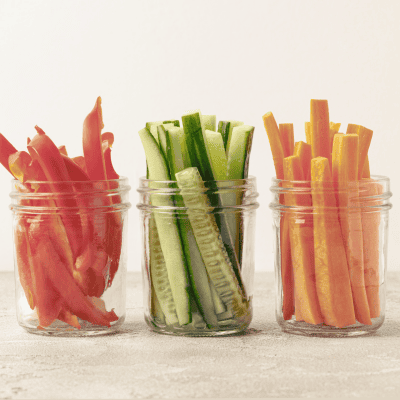
Carrot, cucumber, and bell pepper sticks with guacamole for dipping.
Apple Slices:
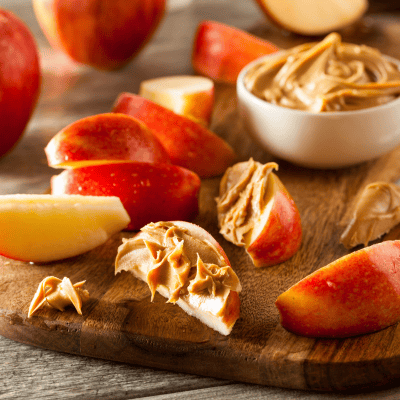
Serve with almond butter or sunflower seed butter for a tasty dip.
Fruit Kabobs:
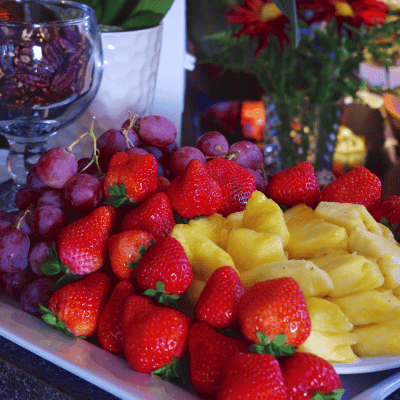
Skewer chunks of pineapple, strawberries, and grapes, with a few nuts on the side.
Dinner:
Baked Salmon:
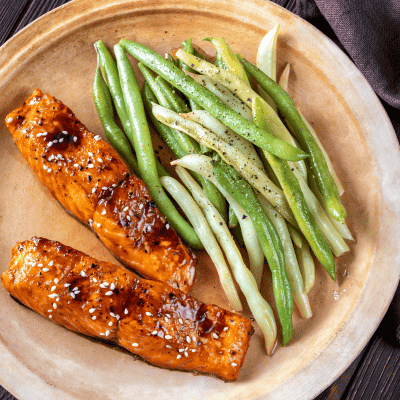
Serve with roasted butternut squash and steamed green beans.
Paleo Meatballs:
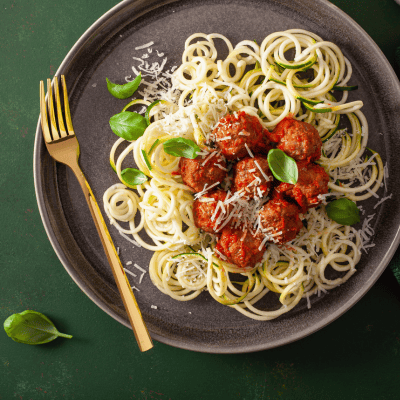
Made with ground beef or turkey, served with a side of zucchini noodles and marinara sauce.
Chicken Tenders:
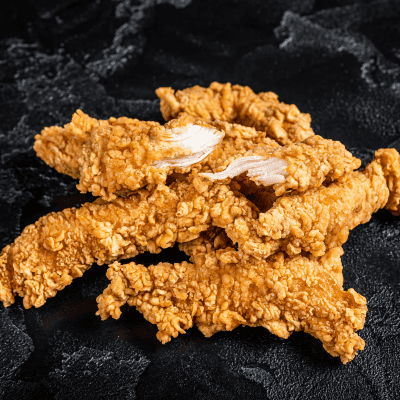
Coated in almond flour and baked, served with roasted rutabaga fries and a side of sliced avocado.
Dessert:
Mixed Berries:
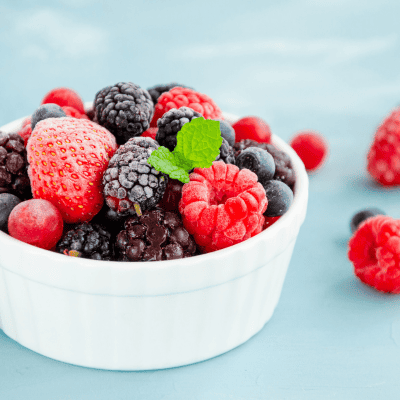
Served with a dollop of coconut cream.
Frozen Banana Pops:
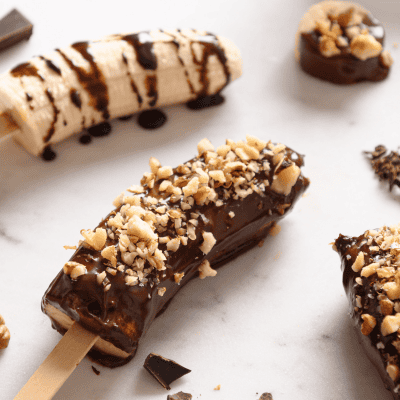
Banana halves dipped in dark chocolate and rolled in crushed nuts, then frozen.
Apple Nachos:
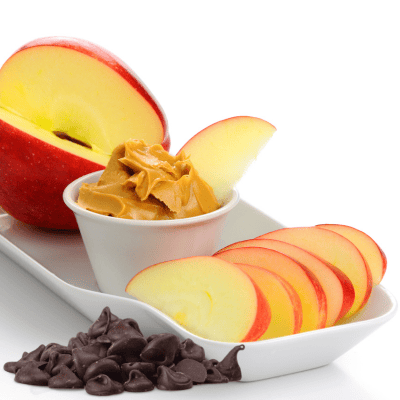
Thinly sliced apples drizzled with almond butter and sprinkled with coconut flakes and a few dark chocolate chips.
For more Paleo meal ideas, check out my Paleo recipes.
Important Tips:
Successfully transitioning your child to a Paleo diet involves more than just changing the foods on their plate. It requires a thoughtful and supportive approach to ensure a smooth and positive experience. To help you navigate this journey, we’ve compiled a list of important tips to guide you. These tips focus on making gradual changes, offering a variety of foods, leading by example, staying hydrated, and listening to your child’s needs. By incorporating these strategies, you can create a nurturing environment that promotes healthy eating habits and makes the transition to a Paleo lifestyle enjoyable and sustainable for your child.
- Gradual Transition: Introduce changes gradually to allow your child’s palate to adjust to new flavors and textures.
- Variety is Key: Offer a wide range of foods to ensure your child receives a diverse array of nutrients.
- Lead by Example: Be a positive role model by following the Paleo diet yourself and creating a supportive environment at home.
- Stay Hydrated: Encourage water consumption throughout the day to keep your child hydrated and support overall health.
- Listen to Your Child: Pay attention to your child’s hunger cues and preferences, and involve them in meal planning and preparation to foster a healthy relationship with food.
Conclusion:
Implementing the Paleo diet for children can be a rewarding journey towards better health and well-being. By focusing on nutrient-dense whole foods and minimizing processed and inflammatory foods, you can provide your child with the nourishment they need to thrive. Remember, every child is unique, so listen to their bodies and adjust the diet as needed to meet their individual needs. With dedication and creativity, you can lay the foundation for a lifetime of healthy eating habits and vibrant living.




0 Comments